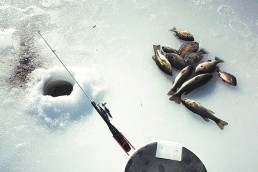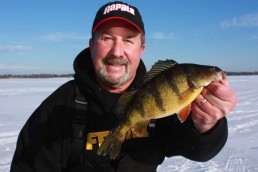Spoon-Fed Panfish Through the Ice
SHARE THIS POST
I fish aggressively; it doesn’t matter whether it’s spring, summer, fall or now—winter! As a fishing guide I really do not have time to finesse anything under the ice. I do not have the luxury of an 8-hour tournament day to finesse 5 to 10 big fish. Don’t get me wrong I like catching big fish, too, but I need action all day to keep me interested. And those are the things that most clients or ice anglers want as well.
Not to mention, most clients—or any ice angler for that matter—don’t have the time or skill to fish with finesse when they have one day a week (probably a weekend day) to put some panfish in the frying pan. That scenario is the perfect reason to fish a little more aggressively to speed things up. Spoon-feeding crappies and bluegills can be the ticket to quick success!
Let’s keep it simple. You do not need a huge box of expensive, over-packaged spoons. Some of my favorites are the “cheapies” you see sitting in a plastic bulk box on the bait shop counter for $1.99.
Here’s a fun game: Grab one of those spoons, walk over to the proper rea in the store and hold it up to all the other $7 spoons that look similar but come in fancy packages. Hmmm. In my opinion, the size and overall weight of the spoon is the most important, with action during descent or when twitched second, and color third. I may be wrong, but it works for me.
So, what size you say? Well, we are not fishing for pike or walleyes, so put away the big, flashy, 1/2-oz Swedish Pimples or Kast Masters. A big crappie has a big mouth, so there is more flexibility there. But even a 10-inch bluegill has a mouth not much bigger than a Cherrio.
Back to the big spoons for a second. I kinda lied; I do keep a large walleye/pike-sized spoon rigged on a separate rod for attraction purposes. When I’m “scouting around” on a massive, weedy flat, I will drop a big, flashy spoon down the hole and aggressively work the bait, using it as an attention getter. Curious ‘gills and crappies will suddenly show up on the electronics, which you could not see earlier because of the way any sonar works in shallow, weedy environments.
At that point, pull that big piece of hardware out of the hole and drop down the secret weapon: a natural-looking, tiny, lightweight jigging spoon. My favorite sizes that perform well on 3- to 4-pound-test Berkley monofilament ice line are in the 1/10- up to 1/16-ounce range. That being, said, 1/32-ounce is spot on. They are about the size of a penny.
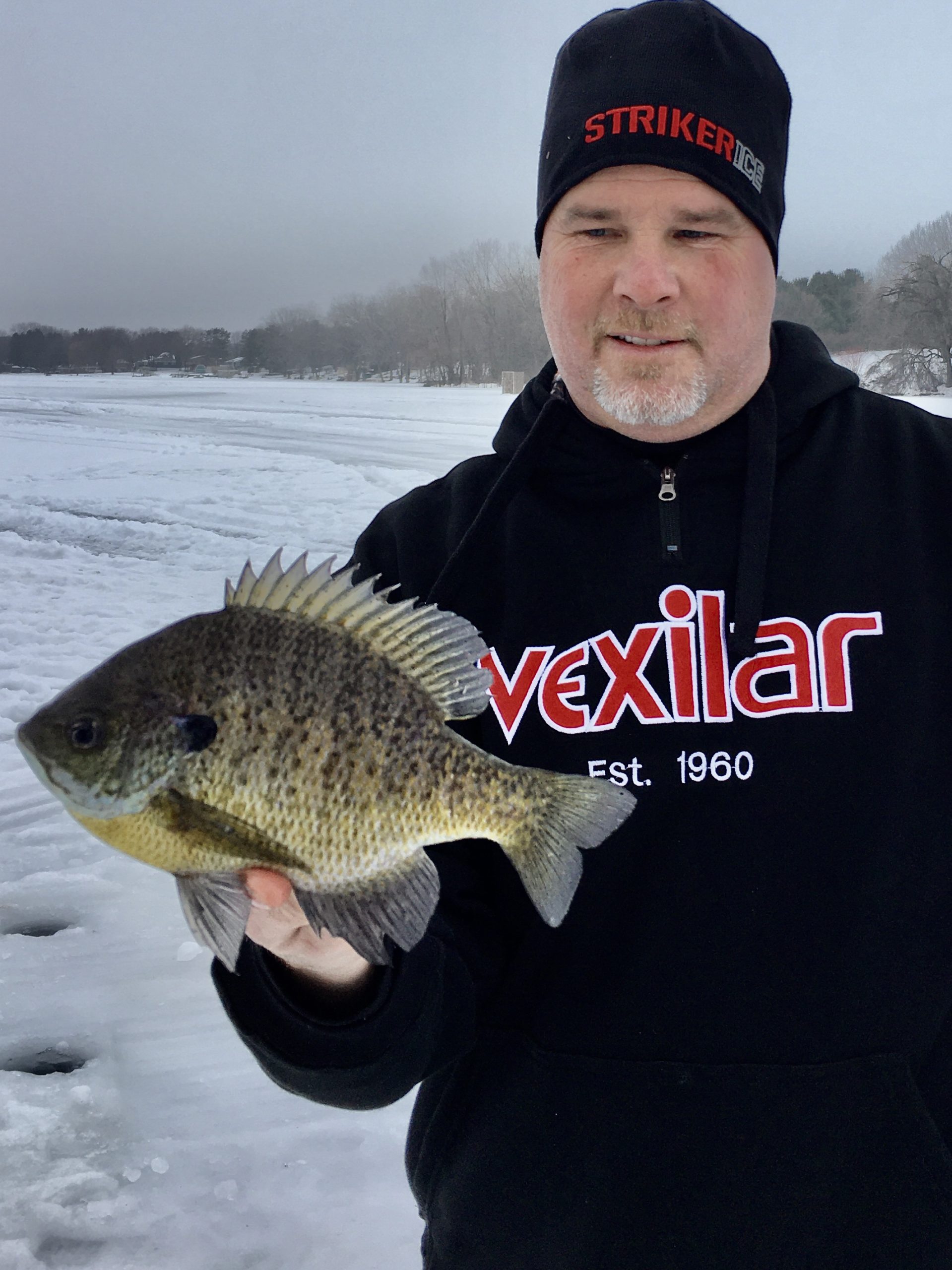
I prefer a light-action rod with a nice, loose tip so I can put some action into the bait; but at the same time, the fish can “slurp” the bait in if they are a little “off.” Stay away from “wet noodle” rods for this type of fishing. I use a variety of spoons like the Northland Forage Minnow, JB Lures Big Bad Bro, VMC Flash Champ, and the classic Swedish Pimple. All these micro spoons have a different shape or profile which creates a different footprint in the water.
For a fun game again, purchase one of each of my favorites and check out the action and drop rate of each bait. Fill a 5-gallon bucket of water and jig in your garage—or living room, lol. If you have the luxury, find an open-water dock or drill a hole and sight fish the bait. Watch and learn.
Are you enjoying this post?
You can be among the first to get the latest info on where to go, what to use and how to use it!
Which bait glides to the side the most? Which bait falls the slowest? Which bait kicks back and forth more or less when jigged? Which bait takes the longest to settle into the “deadstick” state? All these factors are important and will affect your catch rates differently each day.
Now tip each bait with a waxworm, a couple of spikes or a minnow head—real life stuff. Do the experiment again and note the differences. The funny thing about spoons is, they can be finessed fished or they can be fished aggressively to activate the trigger point for fish.
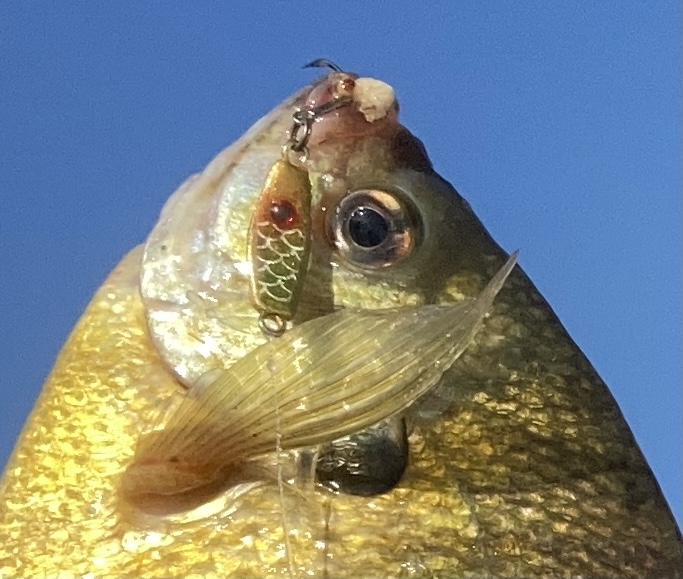
In my opinion, spoons are more versatile than your basic ice jig/tungsten bait, tear drop, etc. Again, this is simply my opinion when applying spoons to the hundreds of situations I encounter on the ice each winter and the results I get from each option/presentation.
The good news is that you don’t need 100 different colors, either. The word “color” is French for “keep it simple.” Just kidding—but do that anyway. Panfish eat bugs/insects, small minnows, young-of-the-year of themselves, plankton, zooplankton—things like that. So, ask yourself, what colors are those items?
For bugs/plankton, etc., how about browns, blacks, grey, transparent shades or mild reds? How about for the small minnows? Silver, white, black, brown, gold, grey, purple/blue or shades of green. So how about young-of-the-year “baby ‘gills/crappies/perch? Gold, silver, white, black, brown, slight yellows, grey, purple/blue, shades of greens, tans, and mild orange tinges.
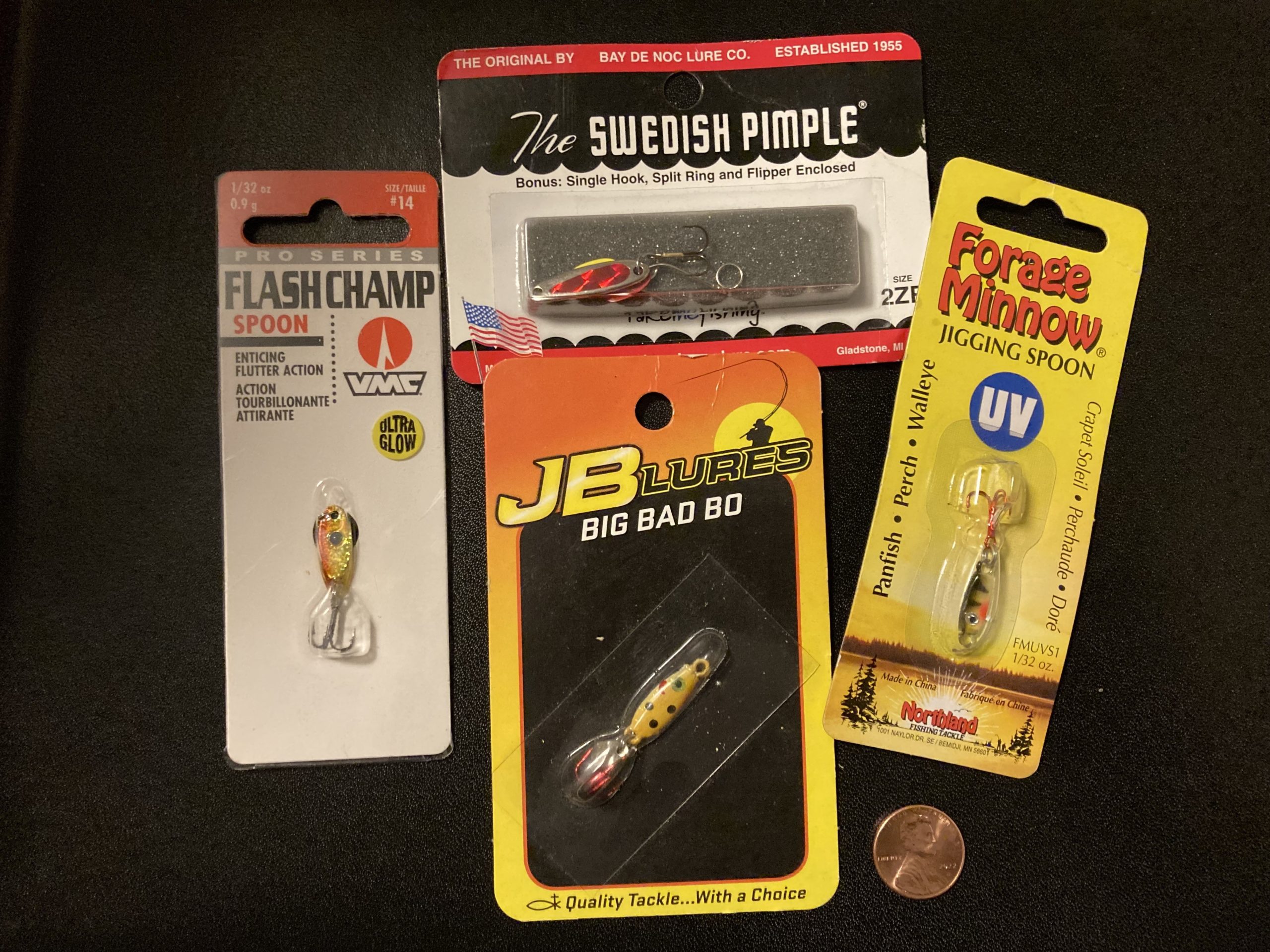
Obviously, natural colors rule, but there is a time and a place for fluorescent colors (flo orange, chartreuse, flo green, etc.) or glow baits as well, like for dirty-water or low-light conditions. And believe it or not, you can cover almost all the bases of sizes and colors for spoon -eeding panfish with about 12 to 20 different baits, which isn’t bad as afar as a tackle box goes. And by the way, these same baits work on the same fish over the side of the boat, or even casting from shore, during open-water conditions, so you are getting some bang for your buck.
So, that’s a micro summary on spoon feeding panfish. Give it a try this winter; I think you’ll be happy ya’ did. And in the process, be prepared for bonus walleyes, bass, or pike—one of the reasons I like 3- to 4-pound-test line line—to have a prayer of landing larger fish.
MWO
SHARE THIS POST
Did you enjoy this post?
You can be among the first to get the latest info on where to go, what to use and how to use it!
Josh Hagemeister
Captain Josh Hagemeister owns and operates Minnesota Fishing Guide Service. He has been in the fishing industry as a professional fishing guide going on 32 years, starting back in the days when he worked for In-Fisherman’s Camp Fish. He contributes to several outdoor publications, fishing reports and social media sites. Minnesota Fishing Guide Service, 320-291-0708, 218-732-9919, minnesotaguideservice.com, minnesotaicefishhouserental.com or mycampfish.com.


